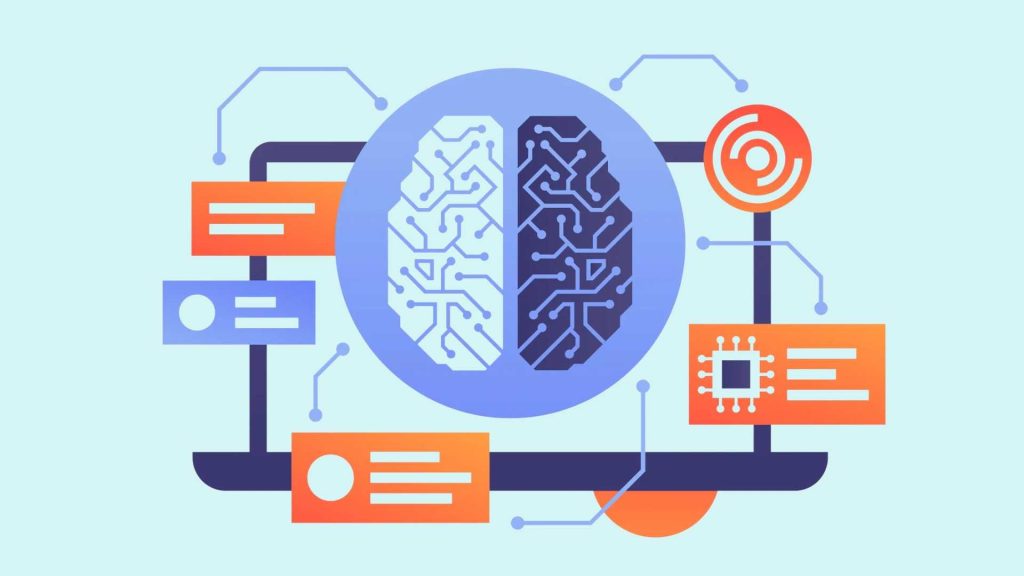In the ever-evolving landscape of Machine Learning (ML), trust and transparency are paramount. This necessitates understanding not only how models in ML arrive at their predictions but also ensuring the reliability, traceability, and ethical use of the data used to train them. Data lineage tracking emerges as a critical tool in MLOps, enabling organizations to track the origin, transformations, and journey of data throughout the ML pipeline. This chapter delves into leveraging data lineage for model debugging and performance analysis, empowering MLOps teams to comprehend the whole world at once
- Identify potential issues within data and transformations.
- Pinpoint the root cause of unexpected model behavior.
- Gain insights into factors influencing model performance.
- Optimize data preparation and model training processes.
Models in ML: Maximizing Debugging with Data Lineage
Data lineage tracking offers several crucial benefits for debugging and performance analysis in MLOps:
- Isolating Issues: When unexpected model behavior arises, data lineage helps narrow down the scope of troubleshooting by tracing the data journey and identifying specific transformations or data points that might be contributing to the issue.
- Understanding Feature Impact: By analyzing how different data features are transformed and utilized within the model, lineage allows us to assess their individual and combined impact on model predictions. This facilitates identifying features that might be irrelevant or negatively impacting performance.
- Reproducibility: Data lineage ensures the reproducibility of model training and analysis by providing a clear record of the data used, transformations applied, and model configuration. This enables replicating results and identifying potential inconsistencies during the development and deployment stages.
- Root Cause Analysis: When performance issues arise, data lineage empowers teams to trace the data flow back to its source and identify potential biases, data quality problems, or errors introduced during transformations. This facilitates addressing the root cause and improving model performance.
- Continuous Improvement: By analyzing data lineage information alongside model performance metrics, MLOps teams can gain valuable insights into how data preparation and model training processes influence performance. This knowledge empowers them to continuously improve these processes and optimize model outcomes.
Models in ML: Exploring Data Lineage Debugging
When unexpected model behavior arises, data lineage tracking transforms from a passive record-keeper into an active debugging partner. By providing a detailed map of the data journey, lineage empowers MLOps teams to pinpoint the root cause of issues, expedite troubleshooting, and ultimately deliver robust and reliable models. Let’s delve deeper into each of the key strategies for leveraging data lineage for effective debugging:
1. Identifying Data-Related Issues:
- Visualizing the Data Journey: Data lineage visualizations offer a powerful tool for identifying potential inconsistencies or anomalies within the data used for training. Interactive dashboards can display data distributions, highlight outliers, and reveal potential biases or imbalances that might be contributing to unexpected model behavior.
- Investigating Specific Data Points: Lineage information pinpoints the origin of individual data points, allowing you to zoom in on specific instances that are causing issues. By tracing these points back through the pipeline, you can identify potential errors during data collection, cleaning, or transformation that might be impacting the model’s predictions.
- Comparing Training and Validation Data: Leveraging data lineage, you can compare the distributions of features across training and validation data sets. This comparison can reveal discrepancies that might lead to overfitting or underfitting, potentially explaining unexpected model behavior. Additionally, lineage information can help identify potential biases present in specific data sources that are impacting model fairness and generalizability.
2. Pinpointing Transformation Problems:
- Tracking Transformation Impact: Data lineage allows you to track the impact of individual transformations on the data throughout the pipeline. By analyzing how these transformations alter feature distributions or introduce noise, you can identify potential issues within the transformation logic itself. For instance, an incorrectly scaled normalization step might distort the data and lead to unexpected model behavior.
- Identifying Logic Errors: Lineage information can expose potential errors or inconsistencies within the code responsible for data transformations. By tracing the data flow through specific transformation steps, you can pinpoint where errors might be occurring and isolate the root cause of the problem.
- Comparing Transformation Versions: When troubleshooting issues that arise after changes to the pipeline, data lineage allows you to compare different versions of transformations. This comparison helps assess how specific modifications have impacted the data and potentially contributed to unexpected model behavior. By reverting to previous versions or refining the changes, you can effectively address the issue.
3. Isolating Feature Impact:
- Understanding Feature Utilization: Data lineage reveals how specific features are transformed and ultimately utilized within the model. By analyzing this information, you can assess the contribution of individual features to the model’s predictions and identify features that might be irrelevant, redundant, or even negatively impacting performance.
- Evaluating Feature Correlation: Lineage information can be combined with feature importance analysis techniques to evaluate the correlation between individual features and model predictions. This combined analysis helps identify features that have an unexpectedly high or low influence on the model’s output, potentially indicating issues with feature selection, engineering, or model design.
- Identifying Redundant or Harmful Features: By analyzing feature utilization and correlation, you can identify features that are highly correlated with each other or contribute minimally to the model’s performance. These features might be redundant and introduce noise into the model, potentially leading to unexpected behavior. Removing or refining such features can improve model efficiency and accuracy.
4. Reproducing Issues:
- Recreating the Training Environment: Data lineage information acts as a blueprint, enabling you to recreate the exact data processing and training environment that led to the unexpected model behavior. This ensures consistency during troubleshooting efforts and eliminates the possibility of introducing additional variables that might confound the issue.
- Ensuring Consistency: Lineage information facilitates maintaining consistency in data selection, transformations, and model configuration during debugging. By referencing the lineage record, you can ensure that you are analyzing the exact data and model that produced the unexpected behavior, leading to more accurate troubleshooting.
- Facilitating Collaboration: Data lineage information can be shared and collaboratively analyzed across different teams involved in the MLOps process. This fosters transparency, enables efficient knowledge sharing, and streamlines the debugging process by allowing different teams to contribute their expertise based on their specific areas of focus within the pipeline.
By effectively utilizing these strategies, MLOps teams can leverage data lineage tracking to transform debugging from a time-consuming and often frustrating process into a systematic and efficient approach. By pinpointing the root cause of issues quickly and accurately, data lineage empowers teams to deliver robust and reliable models that consistently meet performance expectations.
Remember, data lineage is not a one-time solution but rather an ongoing practice that requires continuous monitoring and refinement. As your MLOps pipelines evolve and data volumes grow, adapting your data lineage tracking practices to address new challenges and leverage emerging technologies will ensure its continued effectiveness in fostering a culture of transparency, trust, and responsible AI development.
Models in ML: Optimizing Performance via Data Lineage
Beyond debugging, data lineage empowers MLOps teams to gain deeper insights into factors influencing model performance:
- Understanding Feature Importance:
- Analyze how different features are transformed and utilized within the model.
- Evaluate the correlation between individual features and model predictions.
- Identify features that have the most significant impact on model performance and decision-making.
- Evaluating Transformation Impact:
- Track the impact of individual transformations on the data and analyze how they might be affecting model performance.
- Assess the effectiveness of different feature engineering techniques and identify potential areas for improvement.
- Experiment with alternative transformations and compare their impact on model performance using lineage information to track changes.
- Identifying Data Quality Issues:
- Utilize data lineage to identify potential biases or inconsistencies within the data used for training.
- Analyze the distribution of features across different data sources and identify potential issues with data quality or representation.
- Leverage lineage information to prioritize data cleaning and improvement efforts based on their impact on model performance.
- Optimizing Training Processes:
- By analyzing data lineage alongside performance metrics, identify how data preparation and model training processes influence performance.
- Assess the effectiveness of different hyperparameter settings and training configurations.
- Continuously improve data preparation and model training processes based on insights gained from data lineage analysis.

Best Practices for Leveraging Data Lineage for Debugging and Performance Analysis
- Establish clear lineage requirements: Define the specific data lineage information needed for debugging and performance analysis purposes. This might include details on data sources, transformations, feature engineering steps, and model configurations.
- Integrate lineage tracking with debugging tools: Leverage data lineage information within existing debugging tools and frameworks to streamline the process of identifying and resolving issues.
- Develop interactive visualizations: Create interactive dashboards and visualizations that allow users to explore data lineage information and easily identify potential problems within the data flow.
- Foster a culture of data lineage awareness: Educate and empower your MLOps team on the importance of data lineage for debugging and performance analysis. Encourage them to utilize lineage information actively during troubleshooting and optimization efforts.
- Continuously monitor and improve: Regularly evaluate the effectiveness of your data lineage practices for debugging and performance analysis. Identify areas for improvement and adapt your approach based on evolving needs and challenges.
Challenges and Considerations in Leveraging Data Lineage for Debugging and Performance Analysis
While data lineage tracking offers significant benefits for debugging and performance analysis, several challenges and considerations require careful attention:
1. Data Volume and Complexity:
- Scalability: As data volumes and pipeline complexity increase, efficiently processing and analyzing lineage information can become computationally expensive and time-consuming. Traditional data lineage solutions might struggle to handle the sheer volume of data generated by modern ML pipelines.
- Data Reduction Techniques: Implementing data reduction techniques like sampling, aggregation, or selective lineage capture for specific data subsets can help manage the volume of information and improve processing efficiency.
- Scalable Solutions: Consider utilizing cloud-based data lineage solutions that offer elastic scaling capabilities to accommodate growing data volumes and ensure efficient lineage tracking even as your MLOps environment expands.
2. Integration with Existing Tools:
- Compatibility Issues: Existing debugging and performance analysis tools might not offer native support for data lineage integration, requiring additional development efforts or custom integrations.
- Workflow Modifications: Integrating data lineage tracking with existing workflows might necessitate adjustments to established practices and potentially disrupt ongoing processes.
- Standardized Interfaces: Utilizing standardized interfaces and open-source libraries can facilitate smoother integration with diverse debugging and performance analysis tools, promoting interoperability and reducing development overhead.
- Phased Implementation: Consider a phased implementation approach, starting with pilot projects on specific pipelines before scaling up to the entire MLOps ecosystem. This allows for gradual integration, minimizes disruption, and facilitates the identification and resolution of potential compatibility issues early on.
3. Data Privacy and Security:
- Sensitive Information: Data lineage tracking might involve capturing details about data sources, transformations, and potentially even feature engineering techniques, which could be considered sensitive information.
- Privacy Concerns: When dealing with personally identifiable information (PII) or commercially sensitive data, stringent privacy measures are crucial to ensure compliance with relevant regulations and safeguard sensitive information.
- Access Controls: Implementing robust access controls is essential. Restrict access to sensitive lineage information based on user roles and responsibilities, utilizing multi-factor authentication and encryption techniques for added security.
- Data Anonymization: Consider anonymizing sensitive data elements within lineage information while still providing necessary context for debugging and performance analysis purposes. This helps strike a balance between transparency and privacy concerns.
- Regular Security Audits: Conduct regular security audits to identify and address potential vulnerabilities within your data lineage infrastructure, ensuring the ongoing protection of sensitive information.
Additional Considerations:
- Cost-Benefit Analysis: Carefully evaluate the cost implications of implementing and maintaining data lineage tracking solutions against the expected benefits for your specific use case. Consider factors like data volume, scalability requirements, and the potential impact on debugging and performance analysis efficiency.
- User Adoption and Training: Provide adequate training and support for MLOps teams to effectively utilize data lineage information for debugging and performance analysis. This fosters user adoption, ensures proper interpretation of lineage data, and maximizes the value derived from this valuable resource.
- Continuous Improvement: Regularly monitor the effectiveness of your data lineage practices for debugging and performance analysis. Identify areas for improvement, adapt your approach based on evolving needs and challenges, and leverage emerging technologies to enhance the efficiency and effectiveness of your data lineage tracking efforts.
By acknowledging these challenges and implementing appropriate solutions, MLOps teams can navigate the complexities associated with data lineage tracking and leverage its full potential for effective debugging, performance analysis, and ultimately, the delivery of robust and reliable ML models. Remember, data lineage is an ongoing journey, and continuous adaptation and improvement are crucial for maximizing its effectiveness in the ever-evolving landscape of MLOps.
Conclusion
Data lineage tracking emerges as a powerful tool for empowering MLOps teams to effectively debug models, analyze performance, and continuously improve their ML pipelines. By leveraging data lineage information, organizations can gain deeper insights into the factors influencing model behavior, identify potential issues within data and transformations, and make informed decisions to optimize their ML models for better performance and reliability.
Investing in robust data lineage tracking practices fosters transparency, trust, and responsible AI development within the MLOps ecosystem, paving the way for reliable, explainable, and trustworthy models that deliver value across diverse domains. Remember, data lineage is an ongoing process, and continuous adaptation and improvement are crucial for maximizing its effectiveness in the ever-evolving landscape of MLOps.
FAQ’s:
1: What is data lineage tracking and why is it important in Machine Learning operations (MLOps)?
Data lineage tracking is the process of tracing the origin, transformations, and journey of data throughout the ML pipeline. It’s crucial in MLOps as it ensures transparency, reliability, and ethical use of data, enabling teams to understand model predictions and identify issues within data and transformations.
2: How does data lineage help in debugging and performance analysis of machine learning models?
Data lineage assists in debugging by pinpointing the root cause of unexpected model behavior through tracing data flow and identifying issues within data and transformations. It aids in performance analysis by providing insights into feature impact, transformation problems, data quality issues, and optimizing training processes.
3: What are the benefits of leveraging data lineage for debugging and performance analysis in MLOps?
Benefits include isolating issues by narrowing down troubleshooting scope, understanding feature impact on model predictions, ensuring reproducibility of model training, conducting root cause analysis for performance issues, and facilitating continuous improvement in data preparation and model training processes.
4: How can data lineage be utilized effectively for debugging in MLOps?
Data lineage aids in debugging by visualizing the data journey to identify anomalies, investigating specific data points causing issues, comparing training and validation data distributions, tracking transformation impact, identifying logic errors, isolating feature impact, and recreating the training environment for issue reproduction.
5: What challenges and considerations should be addressed when leveraging data lineage for debugging and performance analysis?
Challenges include scalability issues with data volume and complexity, integration with existing tools, data privacy and security concerns, and conducting cost-benefit analysis. It’s crucial to ensure user adoption and training, continuous improvement, and regular security audits for effective utilization of data lineage in MLOps.









